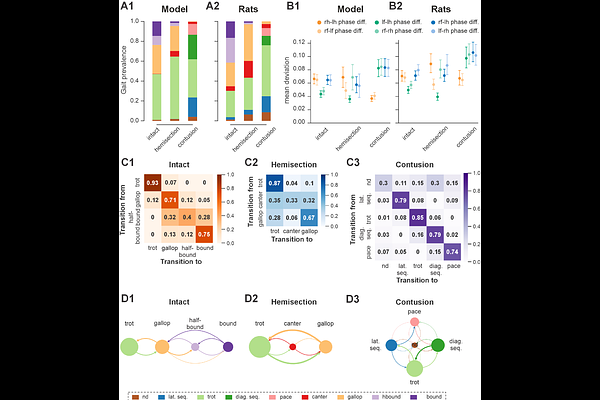Reorganization of spinal neural connectivity following recovery after thoracic spinal cord injury: insights from computational modelling

Reorganization of spinal neural connectivity following recovery after thoracic spinal cord injury: insights from computational modelling
Shevtsova, N. A.; Lockhart, A. B.; Rybak, I. A.; Magnuson, D. S.; Danner, S. M.
AbstractRats exhibit significant recovery of locomotor function following incomplete spinal cord injuries, albeit with altered gait expression and reduced speed and stepping frequency. These changes likely result from and give insight into the reorganization within spared and injured spinal circuitry. Previously, we developed computational models of the mouse spinal locomotor circuitry controlling speed-dependent gait expression (Danner et al. 2017; Zhang et al. 2022). Here, we adapted these models to the rat and used the adapted model to explore potential circuit-level changes underlying altered gait expression observed after recovery from two different thoracic spinal cord injuries (lateral hemisection and contusion) that have roughly comparable levels of locomotor recovery (Danner et al., 2023). The model reproduced experimentally observed gait expression before injury and after recovery from lateral hemisection and contusion, and suggests two distinct, injury-specific mechanisms of recovery. First, recovery after lateral hemisection required substantial functional restoration of damaged descending drive and long propriospinal connections, suggesting compensatory plasticity through formation of detour pathways. Second, recovery after a moderate mid-line contusion predominantly relied on reorganization of spared sublesional networks and altered control of supralesional cervical circuits, compensating for weakened propriospinal and descending pathways. These observations suggest that symmetrical (contusion) and asymmetrical (lateral hemisection) injuries induce distinct types of plasticity in different regions of the spinal cord, indicating that effective therapeutic strategies may benefit from targeting specific circuits according to injury symmetry.